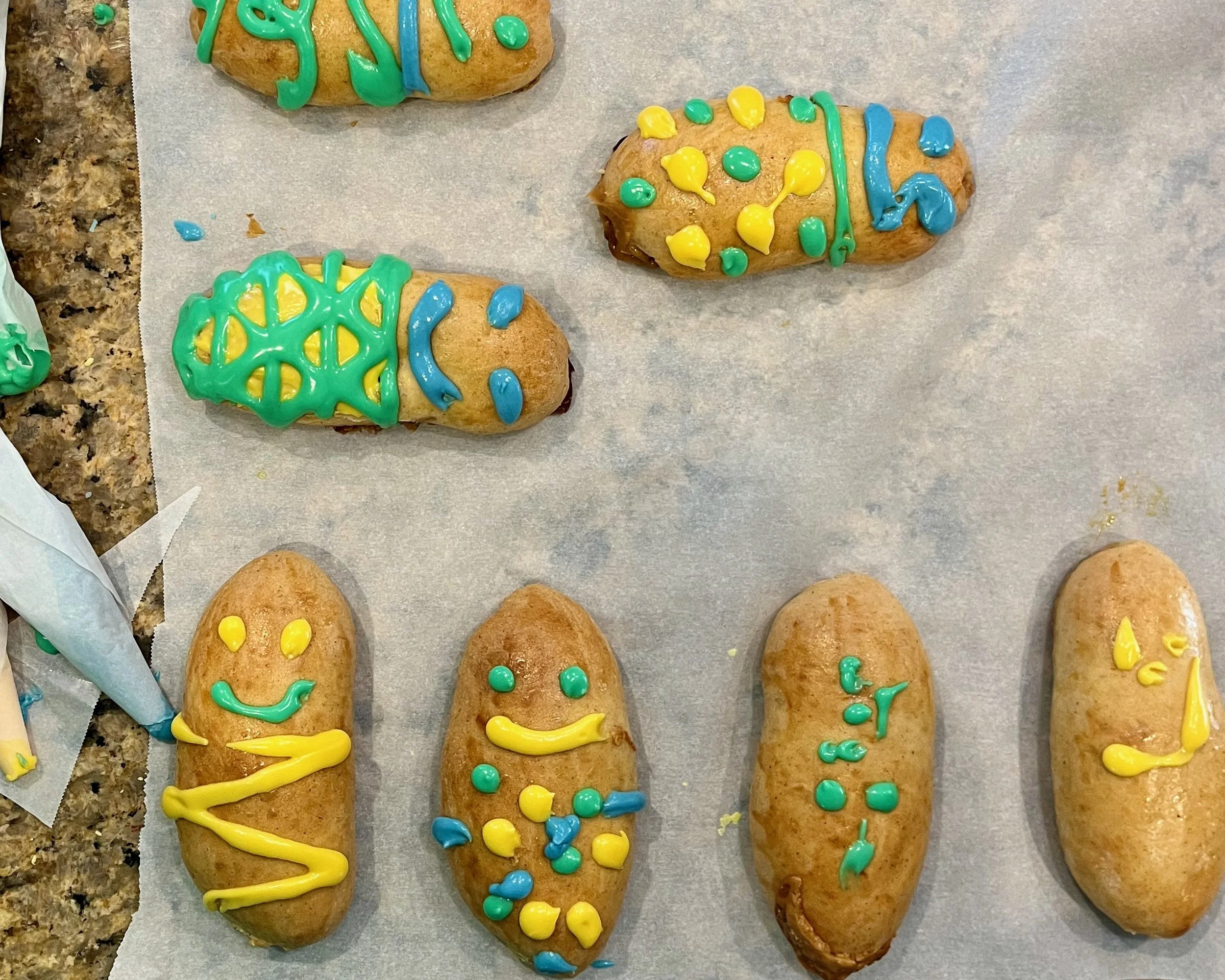3 Halloween Treats from Around the World
Halloween, also known as All Hallows Eve, Hallowtide, or All Souls, is a holiday that has been celebrated in the Christian church since the 8th century when Pope Gregory IV chose the date as a time to honor all the saints who did not have feast days throughout the church year.
Christians in different regions and time periods have celebrated in different ways. Here are three historic Halloween or All Saints treats that you might consider making this year.
You’ll find the recipes for all of them in Kendall’s book Bake & Pray: Liturgies and Recipes for Baking Bread as a Spiritual Practice.
1. Soul Cakes
These spiced cookies were common among British families in the middle ages. The poor would go door to door offering to pray for each household’s deceased. In exchange, they were offered soul cakes as thanks. In time, this practice became known as “souling”—a precursor to modern day trick-or-treating.
2. Pao de Deus
Similar to the practice of souling, Portuguese children used to go door-to-door on All Saints morning asking their neighbors “Pao de Deus?” — “Bread for God?” As with souling, this practice began among the poor asking for sustenance and transitioned into a fun activity for kids. A sweet bun topped with caramelized coconut became synonymous with the practice. It’s so tasty it truly tastes like it could be bread straight from heaven.
3. Guaguas de Pan
In Ecuador, Dia de los Difuntos—translated to Day of the Deceased—is celebrated by godparents distributing buns decorated to look like babies to their godchildren. The breads are decorated with colorful icing to look like a child and served alongside colada morada, a drink made of blue corn, fruit, and spices. Some breads are made not for eating but for placing on the graves of loved ones, where it dries out and lasts for weeks or longer. Some say the reason for decorating the buns like babies is to reflect the innocence that humans return to after death.
Give one of these goodies a try this All Saints! I recommend baking them together with your children—it’s sure to spark conversation and bring even more beauty and meaning to this oft-misunderstood day.
